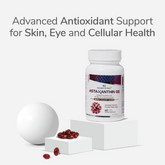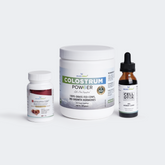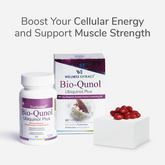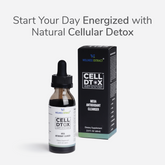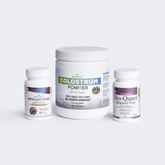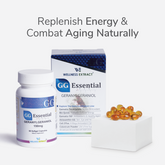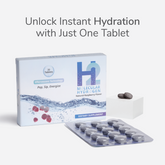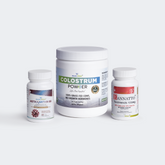Estimated Reading Time: 7 minutes
|Astaxanthin as a natural sunscreen, has emerged as a game-changer in skincare and sun protection. Derived from marine sources, astaxanthin has gained recognition for its ability to shield the skin from UV rays - providing an alternative or complement to traditional sunscreens.
Here, we explore how astaxanthin functions as a sun protectant and its effectiveness in preventing sun damage, relieving sunburn symptoms, and protecting against sun-induced skin aging.
Understanding Astaxanthin: Nature's Powerful Sun Protector
Astaxanthin, an abundant carotenoid pigment found naturally in marine life, has gained increasing recognition for its sun protection properties.
In this section, we delve into its science as an effective natural sun protector, offering insight into its functioning and why this powerful antioxidant supplement has gained so much traction as an aid against sun exposure.
The Science of Astaxanthin
Astaxanthin is primarily found in microalgae like Haematococcus pluvialis and seafood like salmon and krill.
What distinguishes astaxanthin from other antioxidants is its unique molecular structure, which allows it to span bilayer cell membranes for maximum protection from oxidative stress, making it particularly useful in combating UV radiation from sunlight.
Astaxanthin as a Protective Mechanism against Sun Damage
At a cellular level, astaxanthin minimizes sun-induced skin damage by quenching singlet oxygen and neutralizing free radicals produced during UV exposure.
This process reduces oxidative stress and inflammation - two key contributors to damage due to sun exposure - therefore helping maintain overall skin health, elasticity, and appearance through astaxanthin supplementation.
Astaxanthin for Sun Damage Prevention: A Natural Ally Against UV Rays
Astaxanthin has become increasingly renowned in skincare and sun protection circles because it shields the skin against damaging UV rays. Found abundantly in marine environments, astaxanthin offers an effective safeguard against their damaging rays.
Let us know more about Astaxanthin for sun damage prevention in detail.
1. Enhancing Sun Protection with Astaxanthin
Integrating astaxanthin for sun damage prevention can significantly boost its defenses against sun-induced damage, helping your skin fight back more effectively against UV radiation.
While not a replacement for topical sunscreens, astaxanthin enhances overall sun protection - working synergistically with them to provide complete coverage, blocking UV rays with topical sunscreens.
In contrast, astaxanthin attacks the oxidative stress and inflammation caused by any that do slip through.
2. Astaxanthin for Sunburn Prevention and Recovery
In addition to protecting from sunburn damage, astaxanthin also offers relief. Its anti-inflammatory properties help alleviate redness and swelling associated with sunburns for faster recovery.
All of these results make this supplement both preventive and post-exposure treatment helpful.
3. Astaxanthin Offers Natural Sun Protection
Astaxanthin presents an appealing natural option for individuals searching for chemical-free sunscreen alternatives. Consumption through supplements or available in skin care products, astaxanthin not only defends skin from UV damage but also contributes to overall skin health due to its antioxidant benefits.
4. Astaxanthin VS Sunscreen for Sun Damage Prevention
It is essential to recognize their respective roles when doing a comparison of Astaxanthin vs sunscreen regarding sun damage prevention. Sunscreen acts as a physical barrier, while astaxanthin works internally to strengthen skin resilience against UV-induced damage.
Together, they form an effective defense mechanism against sunburns, premature aging, and other issues related to UV exposure.
5. Optimized Astaxanthin Dosage for Sun Protection
The effectiveness of astaxanthin in sun damage prevention depends on dosage. Studies suggest consuming 4-12 mg daily of astaxanthin can provide significant protection from UV radiation.[1]
However, to ensure safety, it's essential to consult healthcare providers to establish the most suitable Astaxanthin dosage for sun protection.
Benefits of Astaxanthin for Sun Exposure
Overall, astaxanthin is an effective natural tool in the battle against sun damage. Its ability to prevent sunburns, reduce inflammation, and fight sun-induced aging--not to mention its synergy effects with traditional sunscreens--make it an indispensable component of comprehensive sun care regimens.
As more research reveals its many advantages, astaxanthin stands out as a promising ally in providing internal sun protection from within.
Astaxanthin, an effective natural carotenoid, has quickly gained recognition for its protective abilities against UV radiation exposure. Not only can astaxanthin act as a natural sunscreen, but it provides additional benefits that make it essential to any comprehensive sun protection strategy.
Here is a detailed list of benefits of Astaxanthin for sun exposure that you should know.
1. Enhanced Immune Response to Sun Damage
One of the lesser-known benefits of astaxanthin is its ability to strengthen our body's defenses against sun damage. This natural compound activates the skin's defense mechanisms, speeding recovery after exposure to UV rays.
Thus, astaxanthin protects cellular levels and assists with faster healing after sun-induced stress or damage.
2. Prevention of Hyperpigmentation
Astaxanthin is an effective solution in combating hyperpigmentation caused by sun exposure. By helping regulate melanin production - responsible for skin color production. Thus Astaxanthin as a natural sunscreen helps in decreasing sunspot formation risk and uneven tone development, reducing sunspot formation risk significantly.
Not only this, but it evens out skin tone more evenly than before. This benefit is particularly valuable for individuals susceptible to sun-induced skin discoloration.
3. Protection Against PhotoAging
While astaxanthin's role in protecting against sun-induced skin aging is widely recognized, its protection from photoaging deserves extra consideration.
Astaxanthin as a natural sunscreen helps maintain structural integrity by shielding elastin and collagen fibers from degradation caused by UV radiation exposure. This ensures youthful looks and textures throughout its use in anti-age skincare solutions.
4. Enhancing Skin Hydration
Astaxanthin's ability to enhance skin hydration is another invaluable asset of its sun protection profile. Prolonged exposure to UV radiation can lead to dehydration of the skin cells and their moisture loss - leaving them dry and flaky after prolonged sun exposure.
Astaxanthin maintains moisture within cells to ensure the skin stays supple even after prolonged UV exposure.
5. Synergistic Effects with Other Sunscreen Agents
When combined with other sunscreen agents, astaxanthin exhibits synergistic effects to increase sun protection further. Working hand in hand with physical and chemical sunscreens, astaxanthin provides stronger defenses against UV rays than ever before - making astaxanthin an ideal supplement to traditional sunscreens and providing an extra layer of defense.
6. Astaxanthin for Inflammatory Response Reduction
Astaxanthin's powerful anti-inflammatory properties are essential in mitigating the impact of sun exposure on skin inflammation. Not only can this help avoid sunburns, but it may also lower the risk of chronic inflammation that could lead to more serious conditions.
7. Support of Skin Barrier Function
Astaxanthin plays an integral part in supporting and strengthening skin barrier function. A strong skin barrier is critical in protecting against environmental stressors like UV radiation; by strengthening its natural barrier function, astaxanthin creates more resilient and healthier skin capable of withstanding sun exposure.
In summary, the benefits of Astaxanthin for sun exposure are many, and knowing about them would be enough to convince you to use it for better results.
How Astaxanthin Works as a Natural Block for Sunlight
Astaxanthin stands out as an intriguing natural solution in sun protection, offering an all-round holistic strategy against harmful UV rays. Sourced from marine organisms such as algae and krill, astaxanthin stands apart from traditional sunscreen products by offering unique and distinct sun care strategies.
1. Astaxanthin as an Antioxidant Sunblock
The quality of natural sunblock with Astaxanthin stems from its powerful antioxidant properties. By quelling free radicals generated by UV radiation and helping reduce oxidative stress related to sun exposure, astaxanthin provides effective protection from within.
Traditional sunscreens only protect from its surface layer. On the other hand, Astaxanthin as a natural sunscreen works from within, strengthening resilience against UV exposure.
2. Choose Astaxanthin Products with Maximum Bioavailability
When selecting astaxanthin products for sun protection, seek formulations with optimal bioavailability. From oral supplements to topical applications, selecting high-grade natural sources like Haematococcus pluvialis algae is key for successful sun protection.
Conclusion
Astaxanthin as a natural sunscreen offers an effective natural approach to sun protection. Though it shouldn't replace topical sunscreens, astaxanthin significantly boosts sun safety by offering internal UV ray protection, reducing sunburn intensity, and protecting skin from premature aging caused by sunlight exposure.
For best results in sun protection applications, it is advised to take professional guidance from healthcare providers before beginning an astaxanthin regimen.
Given all its health-enhancing qualities, it stands out as a powerful asset when seeking healthy, protected skin under the sun.
Disclaimer: These statements have not been assessed by the FDA. The information contained within this page is for educational purposes only. It is not intended to replace the advice or attention of health care professionals.
References












![Top 5 Best Vitamins for Men in Their 30s [Backed by Science!]](http://wellnessextract.com/cdn/shop/articles/Vitamin_for_men_8fe0fe21-19b1-4020-b895-dc104449637e_165x.webp?v=1765878148)




